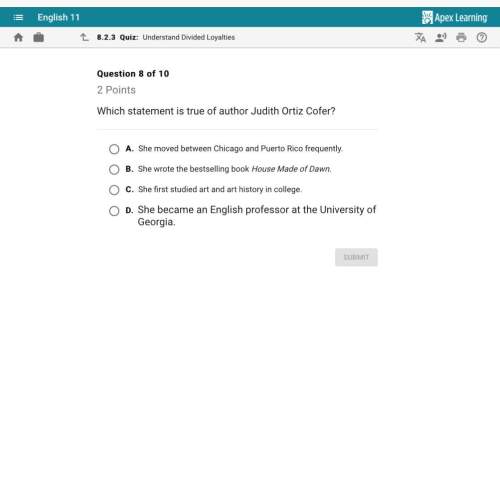Adapted from Understanding Sleep
National Institutes of Health
Until the 1950s, mo...

English, 16.03.2020 19:14 yayrocks2395
Adapted from Understanding Sleep
National Institutes of Health
Until the 1950s, most people thought of sleep as a passive, dormant part of our daily lives. We now know that our brains are very active during sleep. Moreover, sleep affects our daily functioning and our physical and mental health in many ways that we are just beginning to understand.
Nerve-signaling chemicals called neurotransmitters control whether we are asleep or awake by acting on different groups of nerve cells, or neurons, in the brain. Neurons in the brainstem, which connects the brain with the spinal cord, produce neurotransmitters such as serotonin and norepinephrine that keep some parts of the brain active while we are awake. Other neurons at the base of the brain begin signaling when we fall asleep. These neurons appear to "switch off" the signals that keep us awake. Research also suggests that a chemical called adenosine builds up in our blood while we are awake and causes drowsiness. This chemical gradually breaks down while we sleep.
During sleep, we usually pass through five phases of sleep: stages 1, 2, 3, 4, and REM (rapid eye movement) sleep. These stages progress in a cycle from stage 1 to REM sleep, then the cycle starts over again with stage 1. . . .
During stage 1, which is light sleep, we drift in and out of sleep. Our eyes move very slowly and muscle activity slows. People awakened from stage 1 sleep often remember fragmented visual images. Many also experience sudden muscle contractions called hypnic myoclonia, often preceded by a sensation of starting to fall. These sudden movements are similar to the "jump" we make when startled. When we enter stage 2 sleep, our eye movements stop and our brain waves (fluctuations of electrical activity that can be measured by electrodes) become slower, with occasional bursts of rapid waves called sleep spindles. In stage 3, extremely slow brain waves called delta waves begin to appear, interspersed with smaller, faster waves. By stage 4, the brain produces delta waves almost exclusively. It is very difficult to wake someone during stages 3 and 4, which together are called deep sleep. There is no eye movement or muscle activity. . . .
Sleep research is expanding and attracting more and more attention from scientists. Researchers now know that sleep is an active and dynamic state that greatly influences our waking hours, and they realize that we must understand sleep to fully understand the brain. Innovative techniques, such as brain imaging, can now help researchers understand how different brain regions function during sleep and how different activities and disorders affect sleep. Understanding the factors that affect sleep in health and disease may also lead to revolutionary new therapies for sleep disorders and to ways of overcoming jet lag and the problems associated with shift work. We can expect these and many other benefits from research that will allow us to more fully understand the impact of sleep on our lives.
3
Select the correct answer.
How does the last paragraph contribute to the development of the ideas in the passage?
A.
It discusses the various kinds of sleep disorders and how they can be prevented.
B.
It reinforces the idea that the body needs adequate sleep to function efficiently.
C.
It establishes the importance of researching the impact of sleep on a person's health.
D.
It explains the various kinds of studies that were conducted about sleep in the past.

Answers: 2


Another question on English

English, 21.06.2019 14:00
! i need it ! the daughters of the revolution eventually admitted african american to their hall.which best analyzes how this detail supports the meaning in "marian anderson sings"? a)it shows that african american performers would never be able to perform in some theaters. b)its show that an era of discrimination on unfair treatment of african american was finally over. c)it shows that marian anderson had ease discrimination for for african american performers. d)its shows that revolutionaries are not open to new ideas.
Answers: 2

English, 22.06.2019 00:20
Which statement best explains the function of the subtitlein this text? a.it provides additional information that narrows the focusof the text.b.it draws attention to important information in the table ofcontents.c.it introduces the various sections that appear withineach chapter.d.it explains the author's primary reason for writing aboutthis topic.correct (a)
Answers: 1

English, 22.06.2019 07:10
Ivansanger rainsfordgeneral zaroffwhitneyadventurous hunter; calm and composed; considers himself a realist; new yorker; veteran of world war ia hunter; sympathetic to the plight of voiceless, defenseless animals; cautiouscossack; mute; formidable physical stature; wears a black uniform; used to whip prisoners for the great white czarcossack; aristocrat; has sharp, pointed teeth and red lips; devoid of humanity and emotion
Answers: 3

English, 22.06.2019 10:30
From part ii of the novel, pick one paragraph in which the author uses semicolons. read over your chosen paragraph and in 200 words, discuss the effect of using semicolons in order to create longer phrases.
Answers: 3
You know the right answer?
Questions


Mathematics, 16.02.2022 15:20

English, 16.02.2022 15:20

English, 16.02.2022 15:20








Mathematics, 16.02.2022 15:20

English, 16.02.2022 15:20


Mathematics, 16.02.2022 15:20


Health, 16.02.2022 15:20

Mathematics, 16.02.2022 15:20


Mathematics, 16.02.2022 15:20




